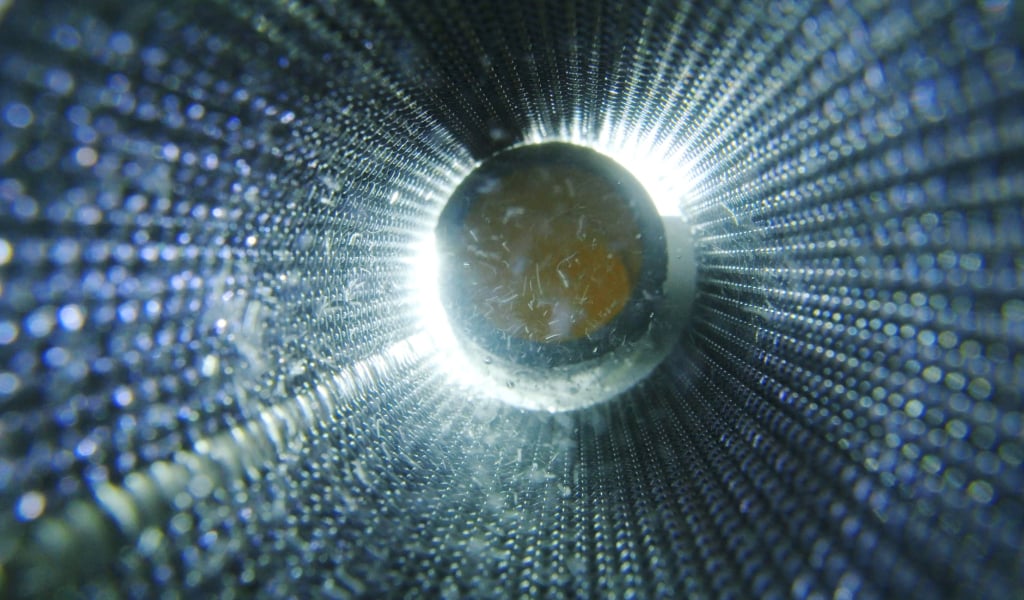Wire Mesh vs. Wedge Wire: What’s the Best Filter for Desalination?
Desalination systems face a unique challenge: maintaining high filtration efficiency while minimizing maintenance and energy consumption. As seawater is drawn into treatment plants, it carries a mix of sand, organic matter, and marine life that can quickly clog filters. This not only disrupts operations but also increases your overall system downtime and raises costs. Choosing the right filter media is critical to ensuring consistent performance in these demanding environments.
Self-cleaning automatic filters have become a cornerstone of modern desalination systems. These filters rely on robust, precision-engineered media to remove particulates while maintaining flow. Two leading contenders in this space are wedge wire screens and woven wire mesh. Each offers distinct advantages in terms of durability, cleanability, and filtration accuracy, making the choice between them a pivotal decision for plant engineers and operators.
At W.S. Tyler, we are committed to delivering cleaner, safer filtration solutions backed by over 150 years of engineering excellence. Our expertise in woven wire mesh allows us to tailor filtration systems that meet the rigorous demands of desalination while reducing environmental impact and operational strain.
In this article, we’ll explore the role of wedge wire screens in desalination, highlight the benefits of woven wire mesh in self-cleaning systems, and provide a detailed comparison of the two media types. By the end, you’ll have a clear understanding of which filter media best suits your desalination needs and how to make an informed decision for long-term success.
Understanding Wedge Wire Screens Place in Desalination
Wedge wire screens are made from V-shaped wire profiles welded onto support rods, forming a continuous slot that allows water to pass while blocking debris. This design creates a non-clogging surface that is ideal for high-flow filtration applications. In desalination, wedge wire screens are often used in intake systems and pre-filtration stages, where large volumes of seawater must be filtered efficiently before entering finer filtration processes.
In self-cleaning automatic filters, wedge wire screens serve as the primary barrier against particulates. Their rigid structure and smooth surface allow for mechanical cleaning mechanisms, such as rotating brushes or suction scanners, to remove buildup without interrupting flow. The slot size is able to be vastly customized, allowing it to match the specific needs of the desalination process, balancing throughput with particle retention.
Wedge wire screens are valued for their durability, resistance to corrosion, and ability to withstand high pressures. Generally made from stainless steel or other high-alloys, they are well-suited for the harsh marine environments typical of desalination plants. Their structural integrity ensures long service life, while the precise slot geometry provides consistent filtration performance.
Additionally, the open area of wedge wire screens can be optimized to reduce energy consumption by minimizing pressure drop.
Despite their strengths, wedge wire screens have limitations. Their rigid construction can make them less adaptable to complex geometries or retrofits. While easy to clean due to its inner flat surface, cleaning efficiency may decline over time if biofouling or scaling occurs, especially in warm or nutrient-rich waters. Moreover, while effective for coarse filtration, wedge wire may not provide the fine particulate retention needed in later stages of desalination, where woven wire mesh can offer tighter control.
The Benefits of Woven Wire Mesh in Desalination
Woven wire mesh is composed of interlaced metal wires that form a uniform grid of openings. These openings can be precisely controlled to achieve filtration ratings as fine as 5 microns of absolute filter fineness, making it ideal for applications requiring high particle retention.
In desalination, woven wire mesh is commonly used in secondary filtration stages or as part of multi-layered screens as well as sinter-bonded filter layers where fine particulate removal is critical to protecting downstream membranes and equipment.
Woven wire mesh integrates seamlessly into automatic self-cleaning filters due to its flexible yet durable structure. The mesh can be cleaned through processes such as backwashing or by cleaning devices depending on the system design.
Its smooth surface and consistent pore geometry allow for efficient removal of trapped particles without compromising flow rate. This makes it particularly effective in environments where biofouling and scaling are concerns, such as warm coastal desalination plants.
Looking to discover more about the benefits of woven wire mesh in you desalination system? Learn more about the impact and advantages of woven wire mesh below:
One of the key advantages of woven wire mesh is its customizability. Engineers can select from a wide range of weave types and wire diameters to tailor the mesh to your specific filtration needs. Materials such as 316 stainless steel or even more advanced alloys such as AVESTA 254 SMO, 904L, and Duplex offer excellent corrosion resistance and mechanical strength.
Additionally, woven mesh provides a high open area while maintaining fine filtration, which helps reduce pressure drop and energy consumption which are critical factors in large-scale desalination operations.
As desalination technology evolves, there is a growing demand for filter media that balances precision, durability, and cleanability. Woven wire mesh meets these criteria and offers a more adaptable solution than rigid wedge wire screens.
Its ability to be formed into complex shapes and layered for multi-stage filtration makes it a preferred choice for engineers looking to optimize performance and reduce maintenance. This versatility is driving increased adoption in both new installations and retrofits of existing systems.
Mesh vs. Wedge Wire: Which Performs Better in Desalination Filters
When comparing mesh and wedge wire screens, one of the most critical factors is filtration precision. Woven wire mesh has the ability to achieve fine filtration ratings all the way down to 5 microns absolute and 1 micron nominal, which is essential in pre-filtration for protecting sensitive downstream components like reverse osmosis membranes.
Due to the slot geometry of wedge wire screens, there is a higher risk of larger particles slipping through, especially if they align with the slot orientation. Woven wire mesh, with its uniform grid structure, offers greater precision and consistency, significantly reducing the chance of particle bypass. This makes mesh the superior choice for fine particulate retention, especially in multi-stage desalination systems.
Both media types differ in how effectively they shed debris. Wedge wire’s smooth, rigid surface is ideal for mechanical cleaning. Woven wire mesh, while more flexible, can be cleaned using methods like backwashing or rotating cleaning devices.
However, wire mesh may require more frequent cleaning in high-debris environments due to its tighter pore structure. That said, its ability to maintain filtration accuracy over time often offsets the increased cleaning frequency.
Wedge wire screens are known for their robust construction and ability to withstand high pressures your system may face. Their rigidity makes them ideal for large-scale intake systems but limits their adaptability in compact or custom filter designs.
Woven wire mesh in contrast offers greater design flexibility and customization options. It has the ability to be formed into cylinders and layered configurations, making it suitable for retrofits and complex filter geometries. This flexibility also extends to prototyping and iterative design, where woven wire mesh allows for rapid testing and modification without the need for specialized equipment. This makes it an ideal choice for R&D teams and custom filtration projects.
Additionally, customizing woven wire mesh elements is often more cost-effective, as they can be fabricated using standard weaving and forming techniques. In contrast, custom wedge wire elements typically require specialized tooling or welding equipment, which can increase production costs and lead times.
This adaptability is a key advantage in modern desalination plants seeking modular, scalable solutions.
Increasingly, desalination engineers are turning to a hybrid filtration system that combines wedge wire and woven wire mesh. On one side, wedge wire serves as a pre-filtration layer, capturing larger debris and reducing the load on finer mesh layers downstream. On the other side, the combination of wedge wire screens and multi-layered wire mesh helps to enable your system to manage higher burst pressure than with only one of these filter elements.
This integration enhances overall system efficiency, reduces maintenance intervals, and extends the lifespan of critical components. By leveraging the strengths of both media types, operators can achieve multi-stage filtration that balances throughput, precision, and durability.
Making the Right Filter Media Choice
Desalination systems rely on effective pre-filtration to ensure consistent water quality and protect sensitive downstream components. Wedge wire screens offer durability and efficient coarse filtration, especially in high-flow intake systems. Woven wire mesh, on the other hand, provides fine filtration capabilities and design flexibility, making it ideal for secondary pre-filtration stages and precision-focused applications. Both media types play a vital role in self-cleaning automatic filters, each contributing unique strengths.
The most effective pre-filtration setups often combine both technologies. By using wedge wire and woven wire mesh together, it allows you to manage higher burst pressure capabilities and gives desalination systems the setup to achieve multi-stage filtration that maximizes throughput while minimizing maintenance. This hybrid approach enhances cleaning efficiency, an extended lifespan for your critical components, and leads to lower costs for a long term view.
Engineers and plant operators should consider system-specific needs which include flow rates, particulate loads, and space constraints when selecting or designing filter media.
At W.S. Tyler, we specialize in crafting cleaner, safer filtration solutions backed by over 150 years of experience. Our woven wire mesh products are engineered to meet the rigorous demands of desalination, offering precision, durability, and adaptability. Whether you’re upgrading an existing system or designing a new one, our team is here to help you select the right media for optimal performance and long-term reliability.
Having difficulty dealing with corrosion in your desalination system? Check out below to learn about multiple high-grade alloys W.S. Tyler offers to help improve the corrosion-resistance for your process:
About Dylan Polz
Dylan is a Content Writer with 2 years of experience in marketing and SEO. Passionate about learning and strengthening his writing skills, he is currently expanding his expertise in particle analysis and woven wire mesh technologies. With a strong belief in the power of information to drive positive change, his goal is to develop content that supports cleaner, safer solutions across all industries.



